Silver Certificates are an essential part of U.S. monetary history. Although they are no longer in circulation, they remain valuable to collectors and history enthusiasts, reminding them of when the U.S. dollar was directly linked to precious metals.
What are Silver Certificates?
Silver Certificates were a form of U.S. paper currency issued between 1878 and 1964. Unlike today’s Federal Reserve Notes, Silver Certificate were backed by an equal amount of silver, allowing holders to exchange them for actual silver bullion.
They were introduced to encourage the use of silver in the economy and to establish a reliable currency system that wasn’t entirely dependent on gold.
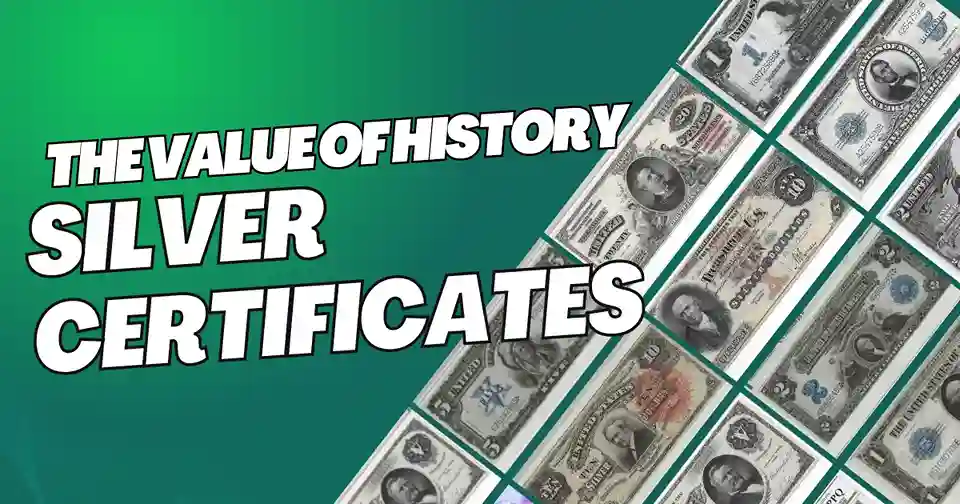
History of Silver Certificates:
The Silver Certificates began in 1878 after the Bland-Allison Act forced the U.S. Treasury to buy a certain amount of silver and convert it into coins and certificate. These certificate became an important piece for trade, representing actual silver that the government held in reserve. Over the decades, silver certificates have become a major part of U.S. currency, with several designs and denomination variations.
One of the key moments in their history was the Silver Purchase Act of 1934, which further supported the role of silver in the currency system.
However, the use of Silver Certificate ended in the 20th century as the world changed to a fiat currency system, which meant currencies were no longer backed by precious metals like silver or gold.
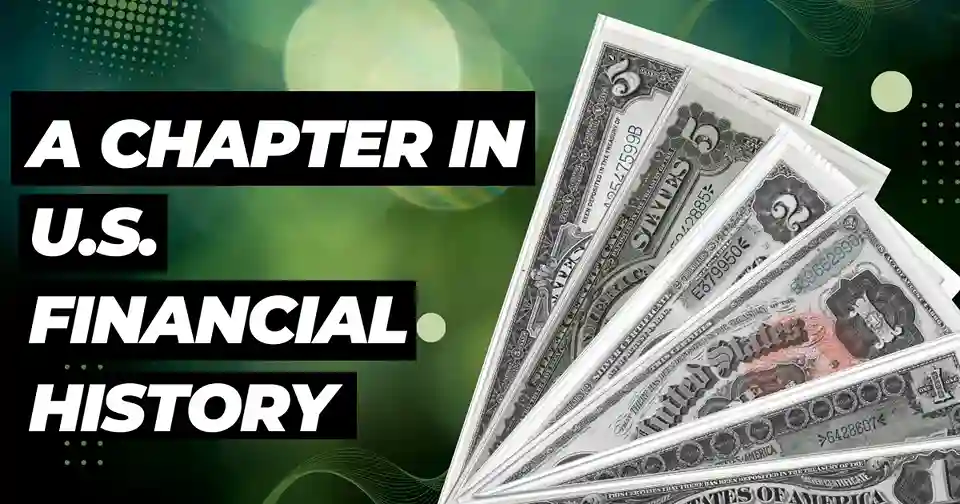
Role of Silver Certificates in U.S. Currency:
When Silver Certificates were first introduced, they were directly exchangeable for silver coins or bullion. A $1 Silver Certificate, for example, could be exchanged for one silver dollar or the same amount of silver metal.
This feature gave silver certificate high value, which made them unique from other forms of currency.
After some time, though, their need was stopped officially. By the 1960s, Silver Certificate could no longer be exchanged for silver bullion, marking the end of an era in which U.S. currency was directly backed by precious metals like silver.
Design and Features of Silver Certificates:
Silver Certificates went through several design changes during their nearly century-long existence. Early certificate featured unique designs and detailed engravings of historical figures and symbols of liberty.
The blue and red Treasury seal and serial numbers were distinct features, making them easy to recognize. By 1928, the size of U.S. currency was standardized, and Silver Certificate were also becoming smaller and more distinctive in appearance.
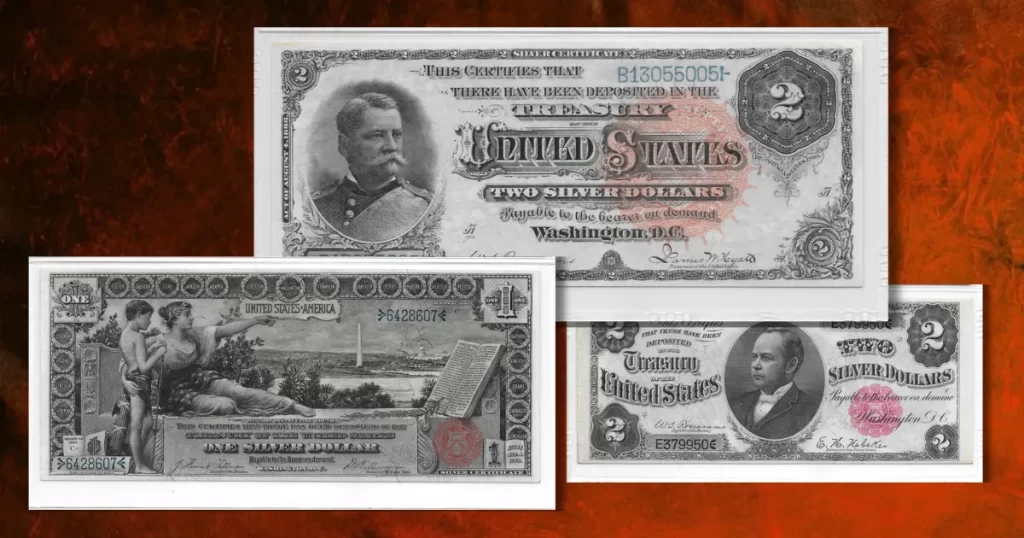
Denominations of Silver Certificates:
Silver Certificates were issued in many denominations, ranging from $1 to $1,000. Some of the most commonly circulated were the $1, $5, and $10 notes.
However, larger denominations, such as the $500 and $1,000 certificates, were also printed, though they are much rarer today. Certain series, like the 1934 $5 Silver Certificate, are very rare and liked among collectors.
Large Size Silver Certificates:
Silver Certificates were initially introduced as large-size notes. They were very uncommon at the beginning and got the name of ‘’Horse Blanket’’. They were 7.38 x 3.13 inches in size and were engraved with portraits of famous personalities and detailed designs.
| Year | Denominations Issued | Notable Features |
| 1878-1880 | $10, $20, $50, $100, $500, $1000 | In this series, a third signature of the US Assistant Treasure was added by the US treasury. |
| 1886 | $1, $2, $5, $10, $20 | In this series, smaller denominations were introduced to increase the use of silver certificates in daily transactions. |
| 1891 | $1, $2, $5, $10, $20, $50, $100, $1000 | The paper quality of these notes was improved and made more durable. |
| 1896 | $1, $2, $5 | These Notes were commonly known as the ‘’Educational Series’’ and were famous for their unique design. |
| 1899 | $1, $2, $5 | The blue and red Treasury seal with matching serial numbers was added to these notes. |
| 1908 | $10 | |
| 1923 | $1, $5 |
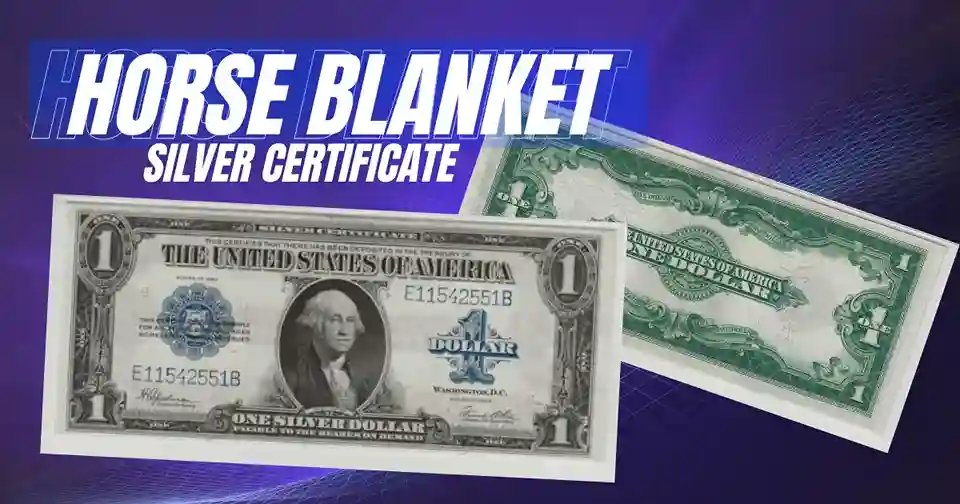
Small Size Silver Certificates:
After some time in the early 1900s, the US treasury began to look for ways to reduce the size of the notes. After the economic burden of World War 1 in 1928, small-size silver certificates officially replaced large-size silver certificate.
| Year | Denomination Issued | Notable Features |
| 1928 | $1, $5, $10 | The first series of small-size silver certificates was issued for the first time. |
| 1934 | $1, $5, $10 | The Statement on the silver certificate regarding their exchange with silver was adjusted in this series. |
| 1935 | $1, $5 | The motto ‘’ In God we trust’’ was added by the US treasury to represent a peaceful and united nation. |
| 1935A | $1, $5 | |
| 1935B | $1, $5 | |
| 1935C | $1, $5 | |
| 1935 D | $1, $5 | |
| 1935 E | $1, $5 | |
| 1935G | $1 | The Federal Reserve Bank issued different variations of the certificate with and without the motto ‘’ In God we believe’’. |
| 1957 | $1, $5 | |
| 1957A | $1, $5 | |
| 1957B | $1, $5 | |
| 1957C | $1, $5 | |
| 1957 D | $1, $5 |
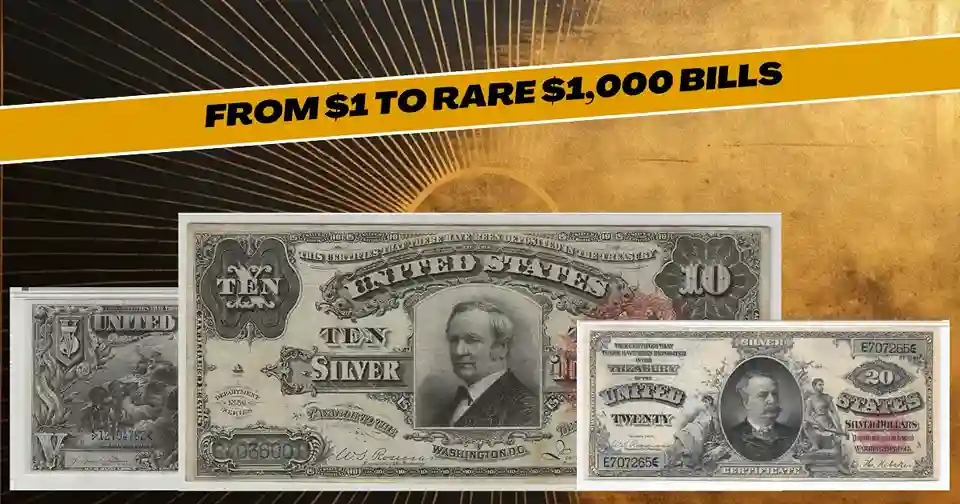
The End of Silver Certificates:
The Silver Certificates were stopped by the US treasury in the 1960s when the U.S. Treasury decided to stop exchanging them for silver bullion.
By 1964, Silver Certificate were effectively obsolete as a means of obtaining silver, though they remained in circulation for a few more years before being fully phased out.
How to Determine the Value of a Silver Certificate:
The value of a Silver Certificate can depend on its rarity and condition. For example, a 1935 $1 Silver Certificate in circulated condition is only worth a few dollars, while a rare $500 certificate in near-perfect condition could be worth thousands of dollars.
Advising a trusted currency dealer or using an online currency valuation guide can help determine a silver certificate’s worth.

Common Misconceptions about Silver Certificates:
Many people believe that Silver Certificates are still exchangeable for silver, but this is not true. In the 1960s, the US government stopped redeeming silver certificate for silver. Others may confuse Silver Certificate with Federal Reserve Notes or other forms of paper currency, thinking they hold similar value and function. More collection on Facebook.
FAQs
Q1: What is the difference between a Silver Certificate and a silver dollar?
A silver certificate is a paper currency that can be exchanged for silver dollars, whereas a silver dollar is an actual coin made from silver like the Morgan Silver Dollar.
Q2: Can you still exchange Silver Certificate for silver?
No, the ability to exchange Silver Certificates for silver ended in the 1960s after the trade shifted to fiat currencies.
Q3: What denominations of Silver Certificates were issued?
Silver Certificates were issued in denominations ranging from $1 to $1,000.
Q4: Are Silver Certificates valuable today?
Yes, depending on the condition, and year, silver certificates are very valuable and can make you a fortune.



